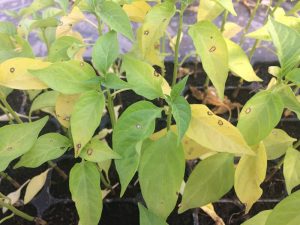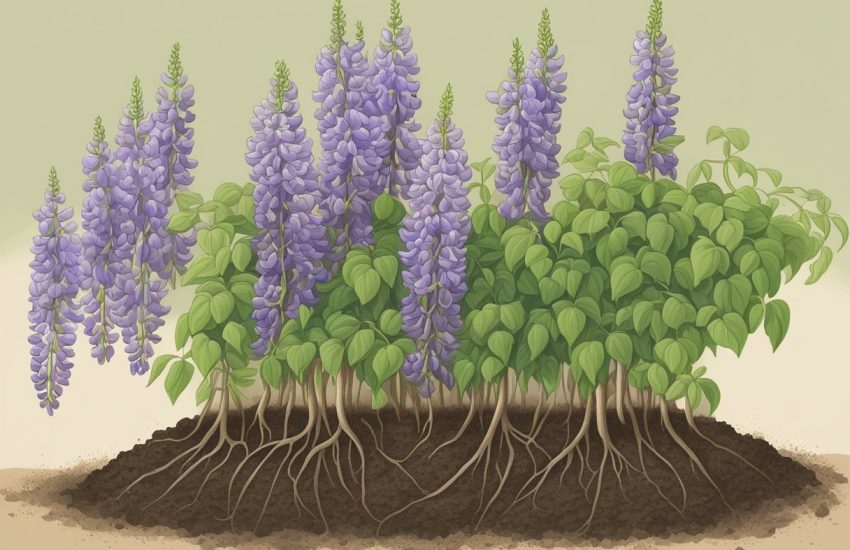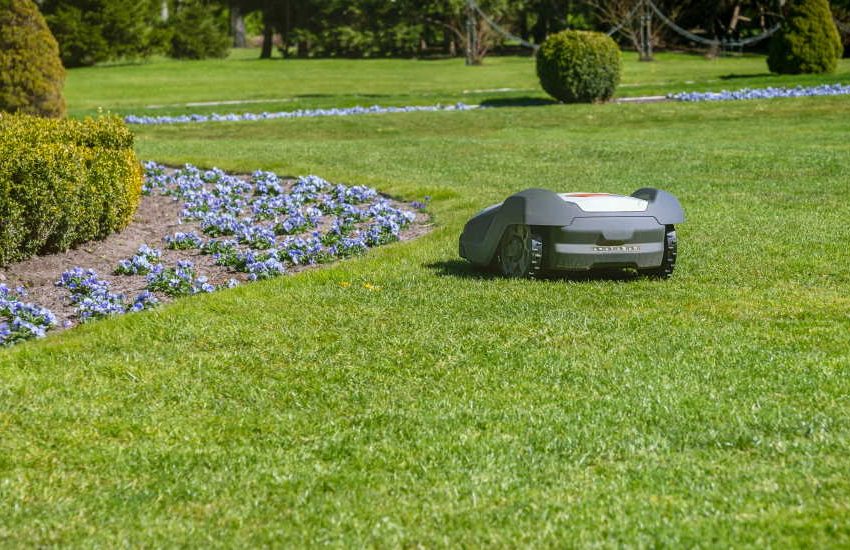Reasons and Fixes for Pepper Leaves Turning Yellow
Pepper plants are among the most popular vegetables in backyard gardens, depending on the type of peppers grown, for instance, bell peppers, chili peppers, or sweet chilies. However, that does not imply that they are impervious to issues. Yellow leaves on your pepper plants are one problem you’ll frequently experience.
Yellow leaves are a problem; they are a sign that something is wrong, and you must find it immediately. It isn’t very pleasant, but it might be fixable. Below are the causes of yellow leaves and what you can do to prevent them.
Why Pepper Plants Have Yellow Leaves
Even seasoned gardeners occasionally encounter yellow pepper leaves, which is a common issue. Nobody wants their peppers to have yellow leaves, but if you do, carefully examine your plants to look for clues that can help you identify the problem.

Consider your watering schedule because the main causes are typically water stress and nutrient deficiencies. Additionally, keep in mind that yellow leaves never change color. Maintain your attention on developing new, green growth. Usually, one of the following things happens if you see yellow leaves. Your task is to identify which one it is and, if possible, begin working on a solution.
Water Stress
Overwatering is among the causes of yellowing leaves on a pepper plant. You may already be aware that pepper plants prefer hot, dry weather. Compared to most plants, they can withstand drying out better. The leaves begin to wilt if they become dry. However, a short watering can revive them.
Inconsistent watering causes water stress, which leads to yellow foliage, decreased pepper yield, and stunted growth. Most people know that plants need water; therefore, underwatering is a concern. Many individuals are unaware that overwatering can be just as hazardous.
Being constant with your watering is the best action because overwatering or underwatering stresses the plants out. It would help to ensure the soil was moist but not soggy daily. Consistent watering and choosing a container with lots of drainage holes are essential if you’re growing pepper plants in containers. Waterlogged roots are not good for pepper plants.
Remedy: proper soil and irrigation
Consider putting the pepper back in its original container. Compacted soil in a garden can be broken up by adding compost or poking holes in the ground with a garden fork. The soil and the containers for pepper plants must be able to drain water. Pick a container with enough holes, and place your pepper plants in well-draining soil. Another approach to avoid overwatering pepper plants is to let the soil partially dry out before giving them more water. The soil surface of the container or the area around the plant in the ground should be dry before watering pepper plants.
Inadequate Nitrogen
One of the essential nutrients needed for plant growth is nitrogen. Your plants won’t be able to reach their full potential and won’t have the lush, green leaves you were hoping for if your soil is deficient in nitrogen. Yellowing leaves are one prominent indicator of a nitrogen deficit.
Determining whether nitrogen is the real problem is the most difficult step. If the yellow leaves start at the bottom of your plant and gradually go upward, a nitrogen deficiency may cause your issue. Because nitrogen is a “mobile nutrient,” or one that moves over time from one area of your plant to another, it has this effect.
Without nitrogen, your plant will transfer the remaining nutrients to the fresher leaves at the top of the plant, causing the older leaves to become yellow. Eventually, your plant’s leaves will completely fall off. You can also conduct a soil test to determine whether your soil is deficient.
Methods of Treating Nitrogen Deficiency.
Correcting the issue won’t make the yellow leaves turn green once more. Those are a lost cause, but you can stop the yellowing of the other leaves on your plant. Seriously, fertilizing is the best line of action! Although fertilizer for your plants is an important step, many people only remember to do it after being planted.
Use a 5-5-5 fertilizer to feed your pepper plants every two weeks. The fertilizer prevents pepper leaves from turning yellow and maintains your plants healthy throughout the growing season.
Lack of Nutrients
Although we all agree that nitrogen is essential, your plant requires more to survive. Yellowing leaves may indicate a shortage of a variety of nutrients. Magnesium and calcium are other essential nutrients for plant growth, and a deficiency in either can cause pepper leaves to become yellow.
Calcium deficiency
Your plants’ growth and development depend heavily on calcium, particularly the formation of their cellular walls. Your plant will have trouble bearing fruit and absorbing more nutrients if your soil is deficient in calcium. Because it prevents your roots from growing as they should, a calcium deficiency can be a major issue. Although it’s less typical than a nitrogen deficit, it could cause your leaves to become yellow. Additionally, your foliage may have brown patches or twisted leaves.
Deficiency in Magnesium
Magnesium deficiencies are uncommon in soil-based gardens, but that doesn’t imply they can’t occur. A crucial ingredient for growth is magnesium. A magnesium issue begins in the base of the plant, much like a nitrogen deficit. The veins in the leaves remain green as the rest of the leaf turns yellow, making the difference easy to distinguish.
Chlorosis has a distinctive appearance that is difficult to ignore. Chlorosis on your leaves is a solid sign that you have a magnesium shortage. Magnesium can be effectively added to the soil by using dolomitic lime.
Iron Deficiency
Even though iron is crucial for photosynthesis and plant metabolism, plants are largely stationary. Therefore, fresh growth is where you will mostly see it. Your pepper plants’ young leaves will be yellow or white with green veins if they are iron deficient, but the remainder of the plant will still appear healthy.
A lack of iron also alters the color of leaves. The generation of enzymes, the growth of chlorophyll, and photosynthesis within the plant all depend on these micronutrients. By observing the color of the young leaves, it is simple to determine whether the pepper plant is iron deficient. Leaves and branches that have just emerged are turning yellow with dark green veins. While the veins and color of adult leaves are lighter and greener.
The quest is treated by applying liquid iron fertilizer to the pepper plant’s foliage. This fertilizer that dissolves in water is a stopgap measure. Direct application of blood meal or chelated iron powder to the soil for more effective and long-lasting treatment.
Diseases and Bacterial Infections
Bacterial infections typically occur during extended periods of warm, humid weather. Both soil-borne germs and pests that come into contact with your plant’s outer surface can cause disease. Usually, this will appear as yellow lines on the leaves.
Your pepper plants may have yellow leaves for another cause, such as a disease that has affected them. The following illnesses can result in yellowing leaves:
- Blight from Phytophthora
- Wilt
- Bacterial spot-on leaves
Illness typically affects more than just the color of the skin. The leaves may have lesions, brown patches, curled edges, or several issues on a single plant. Unfortunately, you might be unable to address the disorders if they are your problem. Instead, you want to prevent it from getting to every plant you have.
That requires you to remove those plants, which can be very upsetting, but it’s preferable to losing a whole garden bed’s worth of pepper (and possibly other) plants.
Infestations of pests
Your plants’ leaves may be yellow if you have an insect infestation. You can tell if bugs are the issue by carefully inspecting your leaves. Several pests, such as these, could result in yellowing leaves.
- Flea insects
- Mites
- Aphids
Insects are frequently to blame if the yellowing forms a little dot pattern. Pests like aphids congregate as a cluster on the underside of the leaves; look at the top and bottom of the leaves for them. Because they cannot rely on conventional pesticides, organic gardeners may find it challenging to eradicate a pest infestation. Neem oil and insecticidal soap are common safe options that kill hazardous bugs and may be removed with water.
Suitable Temperature
It’s well known that pepper plants don’t like temperatures below 60 degrees Fahrenheit and that they could start to lose leaves when the temperature reaches about 40. They can, however, die in temperatures as low as 30.
Remedy
To keep pepper plants, warm at night in cold climates, think about covering them. Even if it’s never below freezing, keeping leaves warm may help protect them from turning yellow.
Surplus of Chlorine
The leaves of pepper plants may become yellow if the soil contains excessive chlorine. Water may contain chlorine, or it could be leftover fertilizer that has been applied to plants over time. Since high chlorine is an unusual cause of yellowing, you might want to start by looking at the other possibilities on this list.
Remedy: Cleanse chlorine
If too much chlorine is what’s causing the yellow foliage, you might try cleaning the chlorine salts from the soil using only chlorine-free water. You can get water free of chlorine by collecting rainwater or letting tap water soak for a few days so that the chlorine dissolves.
Over Fertilization
Pepper plants may become discolored from excessive fertilizing. Fertilizer added in excess causes the potting mix to sault more. Consequently, we constantly advise using water-soluble plant meals and slow-release fertilizer. Quick-release fertilizers can have mixed effects on plants. Plants include wilting, stunted growth, scorched leaf margins, yellowing pepper leaves, and leaves dropping off.
Remedy
Once you’ve located the over-fertilized pepper plants, you may quickly remedy them by washing the plant’s root system, giving it fresh pepper potting soil, watering it well, and then temporarily moving the plant into the partial shade. Your plant will recover from this treatment.
Pepper Plant Growing Tips
all peppers like a lengthy, warm growing season. Plants should be planted outside when the weather is calm and mild, around a week or two after your last frost. When it’s cool outside, keep seedlings indoors during the night and relocate them to a safe area outside in the sun during the day.
- Raised beds, pots, and in-ground gardening work well for pepper seedlings to grow.
- Plant them 18–24 inches apart in a dry, well-drained area. A minimum of 6 to 8 hours of sunshine each day are required for pepper plants. Fertilizer or other organic compounds should be incorporated into the soil before planting.
- After planting, water immediately, then periodically all season. Aim for one to two-inch weekly (more in hotter weather)
- When planting, incorporate a constant fertilizer into the soil. During the growing season, replace as needed.
- To aid in maintaining the soil’s temperature and moisture, surround the plants with mulch (such as cut leaves or straw)
- When the pepper plants start to develop fruit, support them each with a stake or a tiny tomato cage to help carry the weight of the fruit.
- Peppers should be harvested with scissors or a blade, then put in the refrigerator. Before the first fall frost’s arrival, ensure to harvest all peppers.


